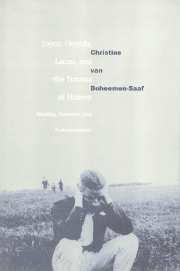Book contents
- Frontmatter
- Contents
- Acknowledgments
- List of abbreviations
- Chapter 1 The stolen birthright: the mimesis of original loss
- Chapter 2 Representation in a postcolonial symbolic
- Chapter 3 The language of the outlaw
- Chapter 4 The primitive scene of representation: writing gender
- Chapter 5 Materiality in Derrida, Lacan, and Joyce's embodied text
- Conclusion: Joyce's anamorphic mirror
- Bibliography
- Index
Chapter 3 - The language of the outlaw
Published online by Cambridge University Press: 22 September 2009
- Frontmatter
- Contents
- Acknowledgments
- List of abbreviations
- Chapter 1 The stolen birthright: the mimesis of original loss
- Chapter 2 Representation in a postcolonial symbolic
- Chapter 3 The language of the outlaw
- Chapter 4 The primitive scene of representation: writing gender
- Chapter 5 Materiality in Derrida, Lacan, and Joyce's embodied text
- Conclusion: Joyce's anamorphic mirror
- Bibliography
- Index
Summary
In the buginning is the woid, in the muddle is the sounddance
Finnegans WakeAlthough a cracked mirror, A Portrait is less complex than Ulysses. In A Portrait, Joyce still offers an image which seems to represent a world we know. In Ulysses, for all its realistic precision of detail, Joyce deliberately sets out to frustrate the reader's expectations of encountering a unified and naturalizable representation. Ulysses not only offers a new style in each chapter, it violates conventions which keep representation stable — especially the assumption that a single voice is tied to a specific character whose speech and memory are his own. On a metalevel, the novel vitiates the expectation that the text can be seen as the product of a coherent authorial agent. Joyce has not absconded behind his “handiwork” — to use Stephen Dedalus's words for the impersonality of his ideal artist, who, “like the God of the creation, remains … invisible, refined out of existence, indifferent, paring his fingernails” (P 215); the author of Ulysses precisely calls attention to himself as absent and improvident. Thus the textual strategy dramatizes the impossible condition of masculine/paternal/writerly authority under colonial rule as it was sketched in A Portrait. It transforms stricture and absence into flamboyant and self-pleasuring mastery. In this chapter, we shall trace the strategies Joyce employed to achieve that reversal.
- Type
- Chapter
- Information
- Joyce, Derrida, Lacan and the Trauma of HistoryReading, Narrative, and Postcolonialism, pp. 74 - 119Publisher: Cambridge University PressPrint publication year: 1999



